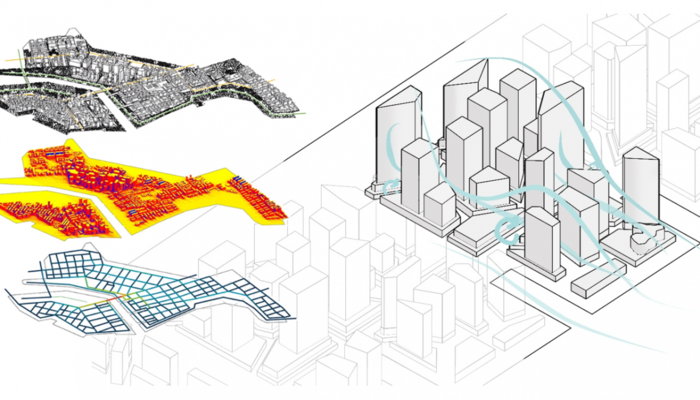Top 8 Frequently Asked Questions about Generative Design (2025)

Table of Contents
Conceptualising spaces is one of the most intuitive processes for an architect. Everything from identifying an idea to mapping its feasibility on-site is a cumbersome process that needs utmost attention and precision. But thanks to technology, this daunting task is now simplified with the futuristic tool of generative design that highly leverages artificial intelligence in architecture. So, if you are someone who wants to make their design regime easier, keep reading to discover all about generative design.
What is Generative Design?

Generative Design is another name for computer-aided design [CAD] that uses Artificial Intelligence [AI] to analyse the prompt and generate multiple design options. It is an approach that leverages the power of computer algorithms to explore and create innovative solutions for complex problems. It represents a departure from traditional, human-driven design processes by using computational methods to generate, iterate, and optimise design alternatives.
At its core, generative design begins with a set of input parameters, like material specifications, performance criteria, and geometric considerations. These parameters are then processed by algorithms that generate a multitude of design possibilities, often producing unique and highly efficient solutions.
Professionals across the realms of architecture, engineering, fashion, aerospace, automotive, and manufacturing can benefit from generative design tools. Software like Fusion 360, Dynamo, Solidworks, Grasshopper, and Rhino are some of the most widely used generative design software around the world.
Generative Design v/s Algorithmic Design v/s Parametric Design

Technology is fast-shaping the fields of design and construction. Thus, many new terminologies and concepts have emerged in the industry in recent times. So, below is a table that explains what differentiates the approach of generative design from other technologies.
| Parameters | Generative Design | Algorithmic Design | Parametric Design |
| Design Process | Uses algorithms and AI to generate design alternatives based on specified goals and constraints. | Utilises predefined algorithms to generate designs, often with a focus on rules and procedures. | Employs parameters and equations to create designs that can be modified based on inputs. |
| Level of Automation | Highly automated, requiring minimal manual intervention in design generation. | Partially automated, with design rules defined by algorithms. Manual tweaking may be necessary. | Automation varies based on parameter dependencies and rules set by the designer. |
| Time Efficiency | Speeds up design processes, particularly in the initial design phase. | May improve efficiency, but the time saved depends on the complexity of the algorithm. | Enhances efficiency by streamlining design adjustments and updates. |
5 Noteworthy Benefits of Generative Design

Generative design is reshaping the future of work for architects and engineers. Rightfully so, a new era of design thinking is drawing upon the Architecture, Engineering, and Construction (AEC) industry that is more reliable and efficient. So, let’s have a look at the key benefits of generative design.
1. Rapid Prototyping
Generative design accelerates the design process by automating the generation of numerous design alternatives. This rapid prototyping capability allows architects and engineers to explore a vast array of design options in a fraction of the time it would traditionally take. This empowers professionals to iterate, experiment, and fine-tune their designs with unprecedented speed and precision, leading to superior final outcomes.
2. Material Optimisation
Material wastage and overconsumption are critical concerns in the AEC industry. But you can address these issues with generative design by creating designs that are not only structurally sound but also optimised for material efficiency. By leveraging algorithms to find the most efficient use of materials, architects and engineers can reduce construction costs, minimise environmental impact, and enhance the sustainability of their projects.
3. Cost-Efficiency
The use of generative design helps AEC professionals make informed decisions about construction costs from the outset. By exploring multiple design iterations and evaluating associated expenses, project stakeholders can identify cost-saving opportunities, such as optimised structural layouts, reduced material usage, and streamlined construction processes.
4. Enhanced Design Thinking
Generative design fosters a culture of enhanced design thinking by enabling architects to think beyond conventional boundaries and explore innovative solutions. Further, by automating mundane and routine design tasks, professionals can invest more time and energy in design exploration and ideation. This leads to the development of more imaginative and unconventional solutions.
5. Improved Sustainability
Embracing generative design helps in optimising projects for material efficiency and structural integrity. This attribute of generative design inherently promotes eco-friendly building processes, enabling professionals to reduce carbon footprints, minimise waste, and create environmentally responsible structures. As the demand for green buildings and sustainable infrastructure continues to grow, generative design is a crucial tool in the pursuit of sustainability goals.
Also Read : What Does a Computational Designer Do and How to Become One?
How to Learn Generative Design?
If learning about generative design excites you and you're eager to delve deeper into this field, it is ideal to enrol for relevant upskilling courses. You can choose between the conventional route of learning academically or learning digitally, depending on the bandwidth you have in terms of time, money, and other resources. However, we strongly recommend you consider online courses because they are more convenient, pocket-friendly, and time-effective. More so, certain upskilling platforms such as Novatr also provide certification, career guidance, and placement support, making the return on investment even higher. You can enrol for the Master Computational Design Course by Novatr, which offers a comprehensive understanding of tools, processes, and software along with industry workflows for participants to develop into seasoned professionals.
8 Frequently Asked Questions about Generative Design
1. Can Generative Design Replace Human Designers?
No. Generative design, although powerful and more productive, can't replace human designers entirely. But, what it can do is act as a valuable tool to augment their creative processes and enhance their efficiency, enabling them to explore more possibilities in less time. Human designers remain essential in driving this process, setting the goals and constraints for the software to work within, and infusing the design process with their unique insights and artistic sensibilities.
2. Which Software is Used for Generative Design?
There is a mixed bag of generative design tools available in the market. Professionals can choose what suits them best based on their level of proficiency, design needs, and time restrictions. Some popular generative design software includes Autodesk Fusion 360, which allows designers to explore various design possibilities within specified constraints. Rhino, another software, is great for creating detailed models, often used together with Grasshopper for more complex designs. And then there's Python, a programming language, which gives designers the freedom to make their own custom rules and designs.
3. What Are The Career Opportunities in Generative Design?
Generative Design offers a range of roles, from Generative AI Engineers who specialise in creating algorithm-driven designs to Automation Engineers who streamline workflows and enhance efficiency. Additionally, job profiles in generative design like Computational Designer, Parametric Designer, Immersive 3D Designer, and Building Performance Analyst offer diverse and exciting avenues for AEC professionals to follow. To bag such roles, professionals need to upskill themselves in niche computational skills.
4. What is The Salary Offered in Generative Design Job Roles?
The salaries offered as a generative design professional distinctly vary based on the amount of experience, skill proficiency, job location, and scope of work. However, mentioned below are the average annual salaries for generative designers across the globe.
- Entry-level (0-2 years of experience)- Rs. 4-8 lakhs per annum
- Mid-level (2-5 years of experience)- Rs. 5-10 lakhs per annum
- Senior-level (5+ years of experience)- Rs. 9-12 lakhs per annum
5. Which Companies are Hiring Generative Designers?
Several globally renowned companies are actively hiring generative designers. Industrial tech giants like AutoDesk, Apple, and Siemens are leading the charge in integrating generative design into their workflows. Additionally, major engineering and architecture firms worldwide such as Foster + Partners, Zaha Hadid Architects, and Gensler have recognised the transformative power of generative design. They are now offering some lucrative job opportunities in the realm of technology shaping the architecture of tomorrow.
6. Can Generative Design be Used for Freelancers and Small-Scale Firms?
Yes, generative design can be effectively utilised by freelancers and small-scale design firms. While traditionally associated with larger corporations due to their advanced technology, generative design tools and software are increasingly becoming more accessible and user-friendly. They empower freelancers and smaller firms to rapidly explore innovative design solutions, optimise materials, and enhance cost-efficiency, ultimately providing a competitive edge.
7. Is Generative Design More Suitable for Small-Scale Projects or Large-Scale Projects?
Generative design is a versatile tool that can be effectively employed for both small-scale and large-scale projects, each offering unique advantages. For small-scale projects, generative design provides an opportunity for creative exploration and rapid prototyping, enabling designers to swiftly iterate through design options and make cost-efficient decisions. On the other hand, for large-scale projects, generative design's ability to optimise materials, reduce waste, and streamline complex processes is invaluable, leading to significant cost savings and sustainability benefits.
8. Where Can I Learn Generative Design?
You can learn generative design by enrolling on university courses or signing up for online programs. We recommend you look out for digital courses as they are usually budget-friendly and teach industry applications that help in professional growth. Below is a list of the best courses you can check out to learn generative design.
| Platform | Course | Fee (INR) | Certification | Duration |
| Novatr | Master Computational Design | 2,45,000 | Yes | 8 months |
| DesignMorphine | Master Of Science In Computational And Advanced Design | 11,93,450 | Yes | 9 months |
| IAAC | Master In Advanced Computation for Architecture & Design | 8,74,600 | Yes | 10 months |
In Conclusion
Generative design is a powerful tool that enables architects and engineers to think beyond the ordinary and create statement-making structures. It is leading the way forward for the AEC industry, optimising workflows, collaboration, and the final output. So, if you are a practising professional or joining their league in the near future, it would be wise for you to learn generative design. It will not only help your professional growth but also enable you to gain competitive salaries and give you an edge over your peers.
If you wish to learn generative design, you must check out the Master Computational Design Course by Novatr. Explore the course today!

 Thanks for connecting!
Thanks for connecting!


.png)



